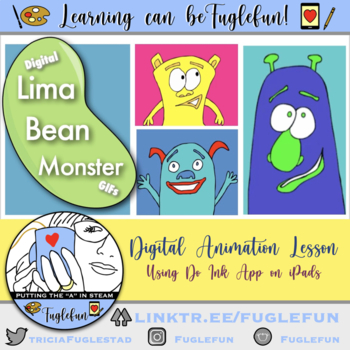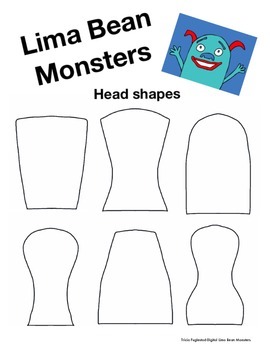Lima Bean Monsters: Animated GIFs Literacy & Art Lesson for iPads
- PDF
- Easel Activity
Also included in
- Practice Making a Veggie Monster on EaselDrag and drop pre-made eyes, nose, mouth to create your own monsterUse my resources to generate invent your own designCreate a Veggie Monster inspired by the book, The Lima Bean Monsterthe artist, Giuseppe Arcimboldo healthy eating Then use the art work for aPrice $6.50Original Price $9.00Save $2.50
Description
Create digital animations with your young students using the Do Ink Animation and Drawing app on the iPads inspired by the story, The Lima Bean Monster. Then turn the animations into an animated GIF that plays on your website to showcase your students' work. This lesson comes with finished examples, a step-by-step guide, handouts to help your students with their monster drawings, a link to view the Lima Bean Monster story online, a link to a low-tech version of this lesson, and a high tech lesson extension.
I have two more Veggie Monster lessons available for you:
How to create a Veggie Monster (free pdf)
How to create a Veggie Monster Digital Collage
Need a way to advocate for iPads for your teaching space?
Share my Creating on iPads page with your administration.







